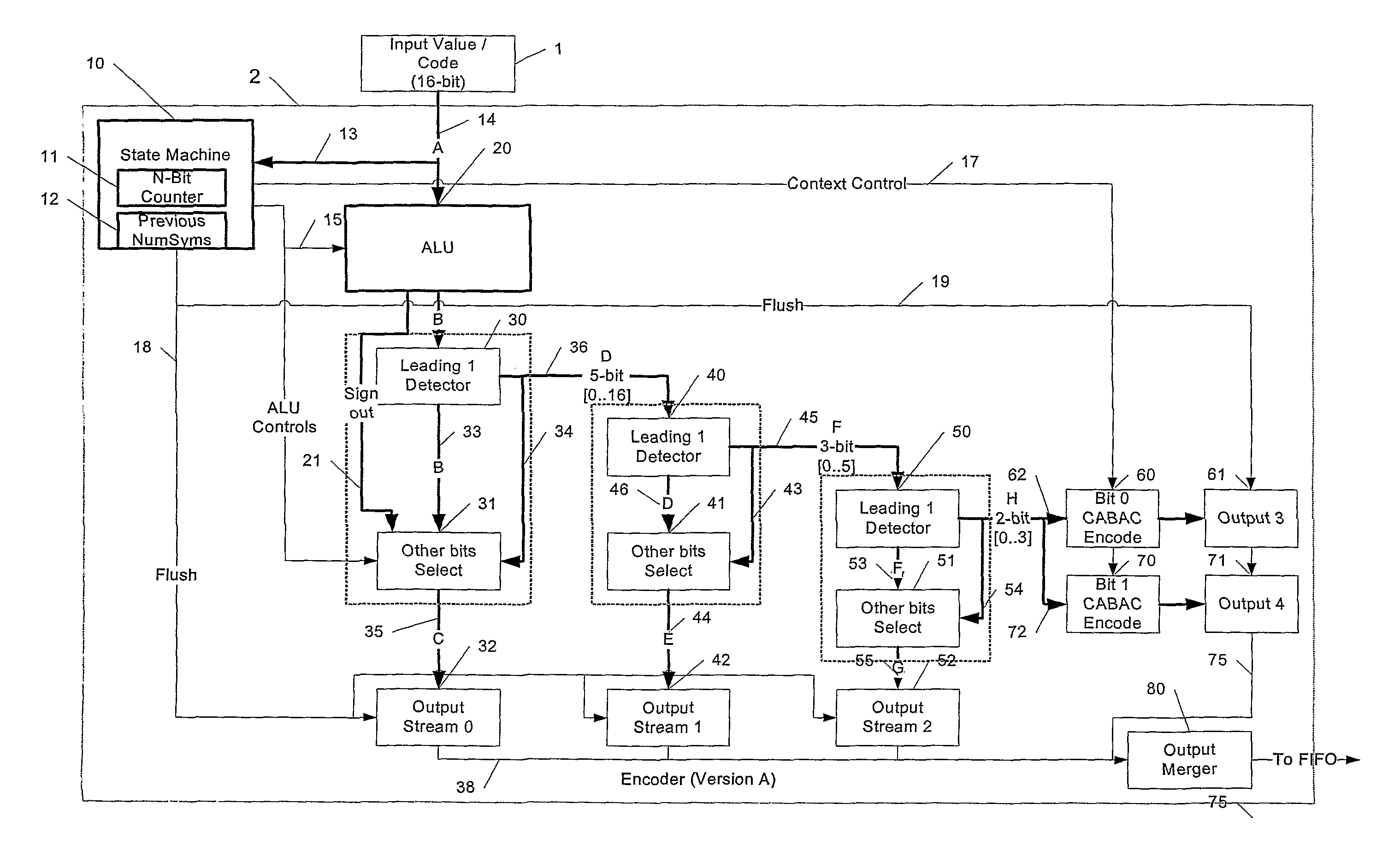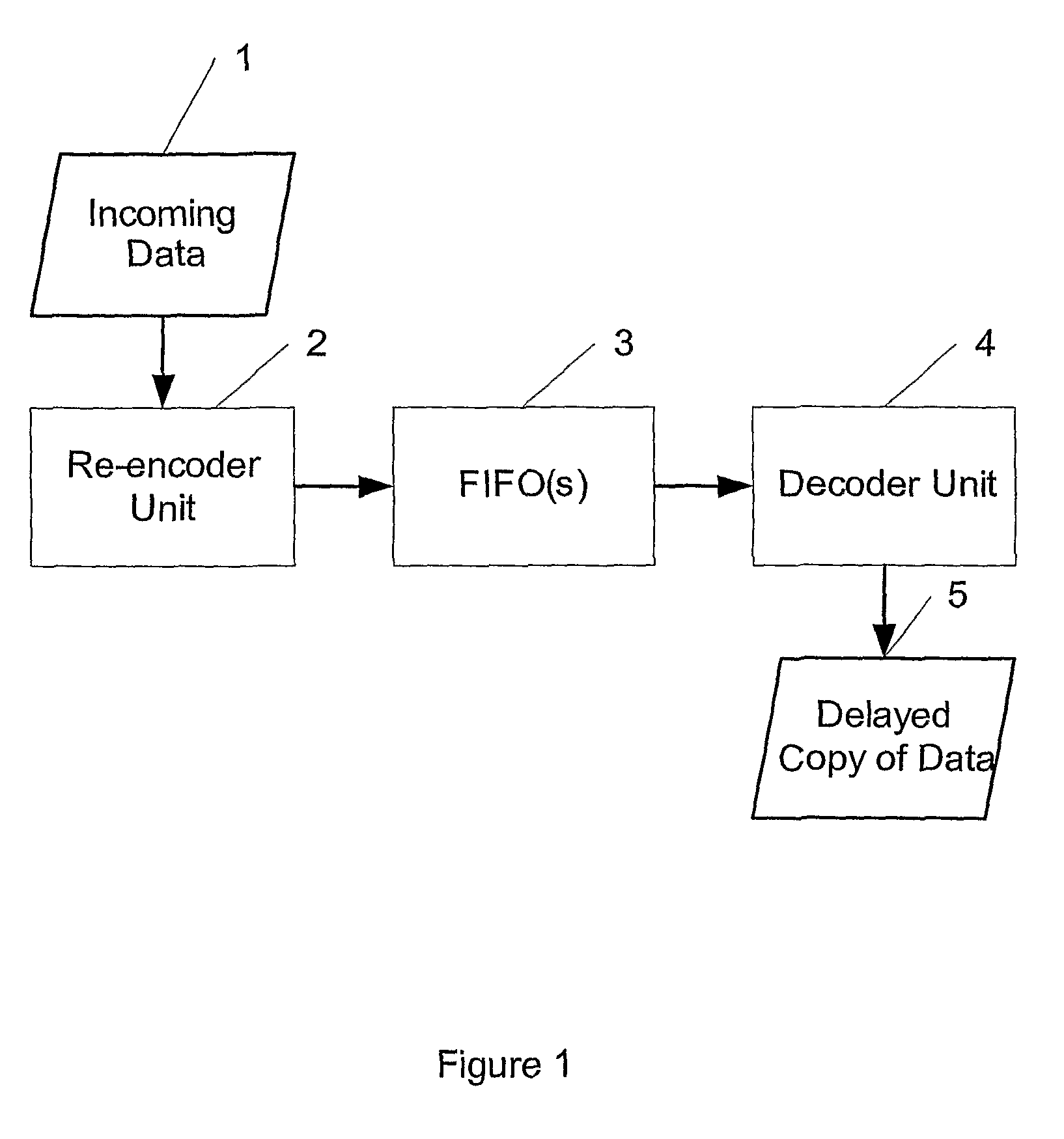Method of decoding data and apparatus therefor
a technology of encoded data and data streams, applied in the field of processing encoded data streams, can solve the problems of complex encoded and decoded methods, process even more difficult, and generally fails to achieve the optimal described by shannon, so as to reduce hardware costs
- Summary
- Abstract
- Description
- Claims
- Application Information
AI Technical Summary
Benefits of technology
Problems solved by technology
Method used
Image
Examples
Embodiment Construction
[0066]FIG. 1 shows an embodiment of the invention in block schematic form.
[0067]Compressed data is fed to an upstream decoder unit 1. This decoder unit may, for example, be as defined in the H264 video encoding standard. The decoder 1 supplies values which are formatted into an expected syntax and are input to a re-encoder unit 2 as a stream of 16-bit values. The re-encoder 2 compresses these values and outputs the results to a “first in, first out” (FIFO) memory 3. The FIFO 3 may be a set of FIFOs rather than a single FIFO. A decoder unit 4 reads the compressed data from the FIFO 3 and re-expands the data to obtain the original data stream and pass it to an output 5. It will be apparent that there will be a variable time delay between the encoding and decoding of a particular symbol, depending on how much data is maintained in the FIFO 3. An object of the invention is to enable the allocation of a minimum sized FIFO that will prevent pipeline stalls or at least prevent stalls that ...
PUM
 Login to View More
Login to View More Abstract
Description
Claims
Application Information
 Login to View More
Login to View More - R&D
- Intellectual Property
- Life Sciences
- Materials
- Tech Scout
- Unparalleled Data Quality
- Higher Quality Content
- 60% Fewer Hallucinations
Browse by: Latest US Patents, China's latest patents, Technical Efficacy Thesaurus, Application Domain, Technology Topic, Popular Technical Reports.
© 2025 PatSnap. All rights reserved.Legal|Privacy policy|Modern Slavery Act Transparency Statement|Sitemap|About US| Contact US: help@patsnap.com



